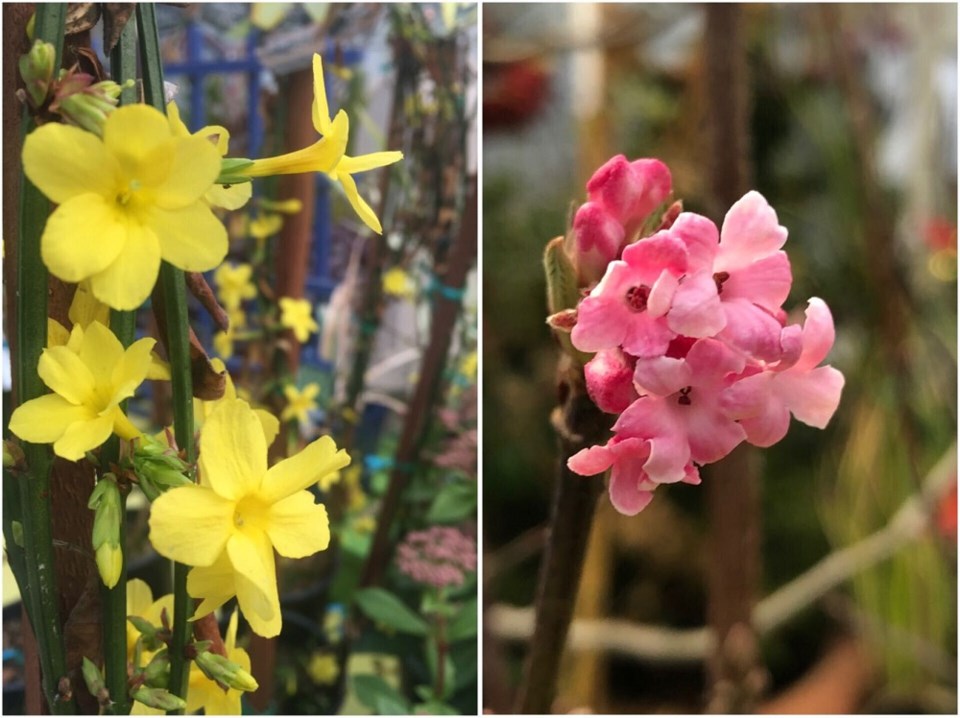We’re all a little hungry for some colour in our gardens and patios right now, and as we hit mid-February there are a few plants which can really brighten up these winter days.
That serious cold spell a few weeks ago did far more damage than we may think, but only warmer weather ahead will let us know for sure just which plants will survive and which ones won’t make it.
It’s a good lesson because any winter colour we plant now must be hardy to Zone 6 at least.
Last week, I mentioned the flowering (catkins) willow family as great winter plants, especially the new varieties like the rich pink Mt. Aso, but there are many other winter flowering shrubs which will provide much needed colour at this time of year.
One of the most highly perfumed of these candidates is the honeysuckle, or lonicera fragrantissima.
Hardy to Zone 6, they are just coming into bloom now, with hundreds of tiny white flowers. Growing to about two metres high and wide, they are one of the few clean-foliaged shrub honeysuckles that have attractive foliage all summer long.
The old favourite, and long blooming viburnum Pink Dawn, was in flower before that cold spell hit, but true to its habit, the old flowers froze off and new ones are already opening with their light perfume. Proven Winners introduced a new variety, viburnum Sweet Talker, which is more compact, and holds on to its foliage. Its clusters of tiny, more heavily scented pink flowers are already open.
Winter Jasmine (Zone 6), with its masses of tiny, cheery, yellow flowers, are also re-blooming after being hit with the cold. For the most impressive effect, fan this vine-like plant along a fence or over a trellis.
If you’re in Zone 7 or higher, then its time to enjoy the winter flowering camellias. Yuletide is my favourite, not only because of the beautiful red petals, but also for the yellow anthers and stamens, which provide critical nectar for hummingbirds and pollen for bees. The Anna’s hummingbirds are now out looking for natural food and camellias are perfect because they will bloom in sequence from now until April.
I love to see folks walking in an area where the Himalayan Sweet Box, or sarcococca, are planted, because their fragrance is so strong it makes you stop to discover the source of such a wonderful scent.
Yellow-flowering Chinese Witch Hazels, hamamelis mollis, are in full bloom and providing another source of lovely fragrance for this time of year. We had some sitting out in the severe cold, and they have come through nicely. What a great pop of colour!
These are just a few of winter’s select bright spots, but when you add in the massive show of heathers and early perennials like arabis, aubrieta, and iberis, or Candytuft, you can really see the colour beginning to arrive. Snowdrops, crocus and aconites are also in the mix, along with early pansies and primulas.
The large and diverse family of hellebores are also beginning to produce new buds after being challenged by the cold.
March 21, the first day of spring, is a long way off but, until then, these plants will not only help our pollinators, they’ll help those of us who need that mid-winter colour lift, too.



